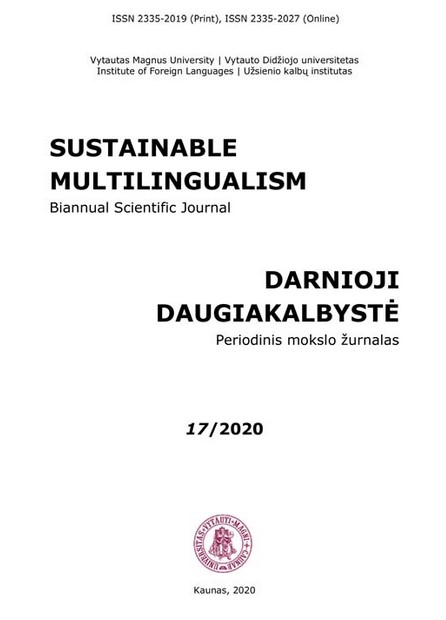LES SONS DU FRANÇAIS ET DU LITUANIEN : ANALYSE COMPARÉE DES TRAITS ARTICULATOIRES EN VUE DE L’ENSEIGNEMENT DU LITUANIEN AUX FRANCOPHONES
LITHUANIAN AND FRENCH SOUNDS: COMPARATIVE ANALYSIS OF ARTICULATORY FEATURES
Author(s): Loïc Boizou, Asta KazlauskienėSubject(s): Phonetics / Phonology, Comparative Linguistics, Baltic Languages
Published by: Vytauto Didžiojo Universitetas
Keywords: Lithuanian; French; Vowel; Consonant; Pronunciation;
Summary/Abstract: The aim of this article is to analyze the differences between Lithuanian and French sounds and to provide a general outlook of the Lithuanian articulatory phonetics mainly intended for French speakers. Such a comparative analysis is relevant because (a) there is no consistent equivalent between written and spoken language, even in Lithuanian, which has a relatively young written language, (b) the international phonetic alphabet does not always accurately reflect differences in pronunciation, (c) the contrastive perspective helps learners to focus on differences that could be unnoticed. Besides the articulatory aspects, the orthographic issues where the spoken form cannot be directly deduced from the written form by a simple relation from grapheme to sound but depends on the graphemic context (mainly related to some assimilation processes) are given a special attention. The questions that remain controversial between Lithuanian phoneticians (such as the retroflex status of the phonetic counterparts of <š> and <ž>) are also mentioned. The comparative analysis shows that the two systems exhibit significant differences: most sounds are not shared. Nevertheless, differences are often slight, so that it is more an issue of orthoepics. Attention should be paid to the differences in the duration and qualitative characteristics of long and short vowels and the relation of graphemes <a, e, o, i> to sounds. From the point of view of consonants, [l̪], [r, rj], [x, ɣ] are problematic, their pronunciation must be learned separately. The pronunciation of palatalized consonants as simple consonants, and not as clusters with [j] as the second element, is also challenging for French speakers.
Journal: Darnioji daugiakalbystė
- Issue Year: 2020
- Issue No: 17
- Page Range: 173-196
- Page Count: 24
- Language: French

